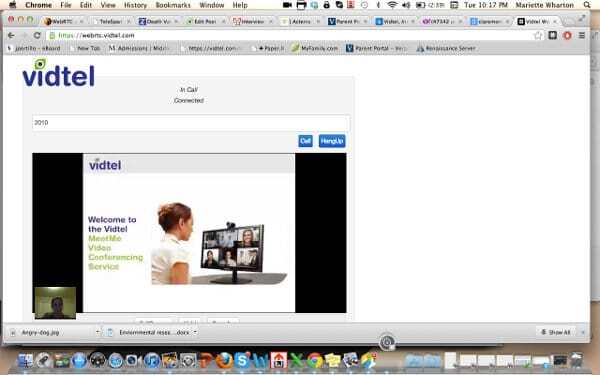[UPDATE: Fidelity Investment acquired Vidtel in 2013]
It was only a matter of time until someone connected WebRTC to existing enterprise video conferencing. Vidtel being the one to achieve that goal makes a lot of sense.
Vidtel is a company I’ve been following for several years now. If there was any one company in the existing enterprise video conferencing market who would understand the value of WebRTC in that context – it should be Vidtel.

Last week, during the WebRTC Conerence & Expo, Vidtel made the announcement: support for WebRTC in their cloud offering. Scott Wharton, the Founder and CEO of Vidtel gave me the opportunity to ask a few questions.
What is Vidtel all about?
Vidtel has been on the forefront of linking enterprise and consumer video conferencing systems as a cloud-based service. Vidtel’s vision is any-to-any, allowing everything from smartphones to desktop systems to room systems to interconnect seamlessly and at a price that enterprises of any size can afford.
Vidtel has been in the hosted enterprise video conferencing market for several years already. What’s the interest of it in WebRTC?
WebRTC is elegant and makes the end-user experience much simpler. No configurations, downloads (at least in our native implementation), no buddy lists to maintain. Ad hoc calling is extremely simple and it can be anonymous.
It also allows us to control the quality end-to-end instead of being reliant on 3rd parties that may have agendas that are unaligned with the end-user. WebRTC frees us from having to work only with what the vendors deliver, since it’s an open source technology.
Another factor is that WebRTC is highly secure, since it runs on https. This is invaluable in healthcare, education, finance, defense, government and other sectors that need high levels of security and encryption.
How does it work? When I need to join a conference, how do I identify myself into the system?
Just open a WebRTC-enabled browser and click to dial or enter an address. It’s anonymous so your identity is not revealed.

On the client side, what signaling did you choose to embed on top of WebRTC?
We support SIP and JSEP for signaling.
How do you deal with the different codec types between WebRTC and the enterprise video conferencing market?
We have a cloud-based gateway that converts the VP8 codec to H.264 (and from H.264 to VP8).
Do you envision people using Vidtel’s WebRTC without any enterprise infrastructure to make calls? Doing things only via web browsers?
Yes, that is how our implementation of WebRTC works. WebRTC users simply open a browser and either directly dial an enterprise system or our gateway can point the user into an MCU/bridge (e.g., Polycom RMX, Cisco Codian, Vidtel MeetMe room) that the user specifies.
What challenges did you encounter with WebRTC?
Learning and getting up to speed with the new standard was a challenge. As always, the mapping between one way of doing things (WebRTC) and the enterprise world (SIP, H.323) presents challenges. Waiting for the browsers to commercialize their technology is another. We wanted to wait for that to happen so that we could make our implementation native instead of having a proprietary plug-in.
Given the opportunity, what would you change in WebRTC?
Sooner support for mobile devices!
What’s next for Vidtel?
Commercializing our support for WebRTC. Supporting additional browsers. Mobile support for WebRTC.
–
The interviews are intended to give different viewpoints than my own – you can read more interviews on my WebRTC resource page.
